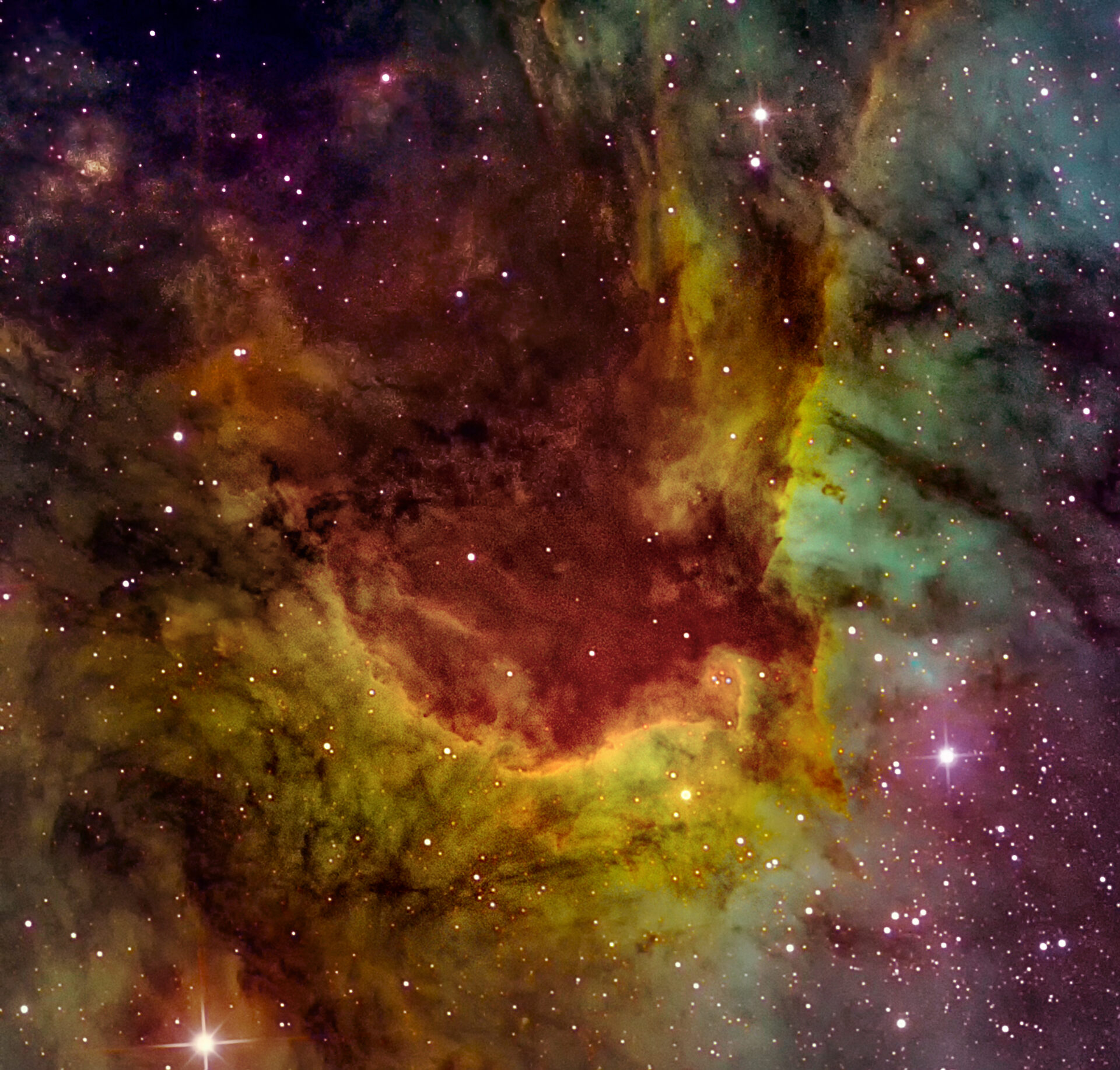Optics: 20″ Planewave CDK20
Mount: Software Bisque Paramount ME II
Camera: FLI PL16803
Filters: Astrodon Ha, Sii, Oiii 3nm
Dates/Times: Sept 2017, Sept 2019
Location: Adler Earth and Sky Observatory, Jackson Hole, WY
Exposure Details: Ha=72x20min, 2:2 , Sii=68x20min, 4:4, Oiii=42x20min, 4:4, total 180 images, 60 hr
Acquisition & Guiding: MaximDL/TheSkyX, MOAG, SBIG STi
Processing: MaximDL, Photoshop CC2019
The Cave Nebula, SH2-155
Original price was: $65.00.$52.50Current price is: $52.50.
The Cave Nebula, SH2-155 This complex gas and dusty region is designated as Sharpless SH2-155 and popularly called the Cave Nebula. This image was taken using narrowband filters that only allow light from specific atoms to pass. Colors in this false color image are set by a standard set for the Hubble telescope where hydrogen emission is green. The reddish color is from Sulfur emission and the blue color is from Oxygen emission. About 2,400 light-years away, the scene lies along the plane of our Milky Way Galaxy toward the royal northern constellation of Cepheus. Astronomical explorations of the region reveal that it has formed at the boundary of the massive Cepheus molecular cloud and a region of hot, young stars. The bright yellowish rim in the image is caused by ionized hydrogen and sulfur gas that is energized by radiation from the hot stars, dominated by the brightest star below and far right of picture center. The radiation from the nearby stars is causing the gas clouds to contract leading to new star formation. This stellar stellar nursery, the cosmic cave is over 10 light-years across. This image was taken through a Planewave 20″ telescope and a Finger Lake Instruments PL16803 camera with a square 38mm CCD chip. To make this image there were a total of 180, 20 minute subimages taken over a period of 60 hours.


